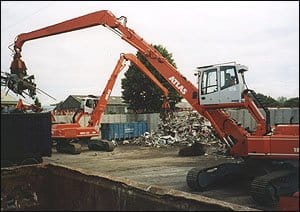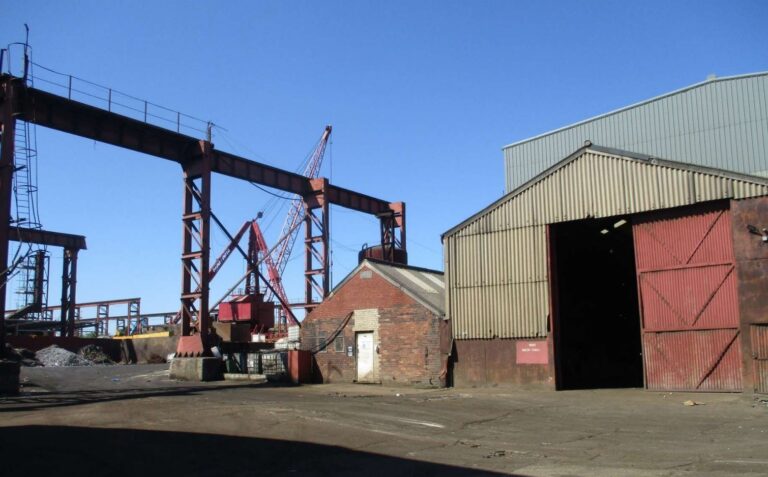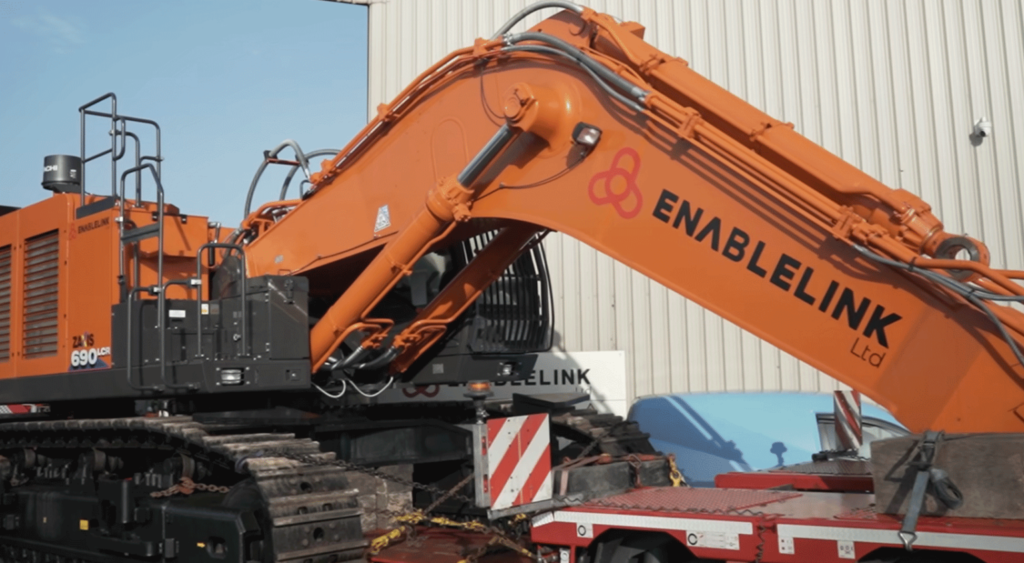The two-acre site, a former construction plant depot on the Willow Land Industrial Estate, is currently handling 100 tonnes of material a day, but should be able to process 300 tonnes a day – around 150 vehicles – when fully operational from the middle of October 2003.
 B Nebbett & Son's new facility at Mitcham aims to handle about 150 vehicles a day |
The yard has been completely resurfaced with a sealed concrete working base, a mechanised car dismantling and depollution line including oil and fluid interceptor tanks. The company has also purchased two new 36-tonne Atlas 1804 LCI crawler-mounted loaders for general handling and sorting as well as loading out-going trucks.
The implementation of the ELV Directive in the UK, expected some time before August 2004, is likely to mean car manufacturers will need to forge relationships with Authorised Treatment Facilities to satisfy their producer responsibilities for ELVs. However, speaking to letsrecycle.com, Nebbett's managing director Stuart Nebbett said he was not yet talking to any manufacturers, as the business is prioritising abandoned vehicles.
Mr Nebbett said: “Abandoned vehicles are the priority in South London at the moment. It is difficult to know where the car manufacturers are going (concerning changes in ELV legislation) at the moment, but I can't see us going down that route. I don't want to end up where the legislation comes in and we end up with more than we can handle. We're taking in 50 to 100 cars a day at the moment, and that could double with the new legislation.”
The company is happy to continue working with local authorities to tackle abandoned vehicles, Mr Nebbett said, as it is getting sufficient value from the ELVs to cover depollution costs at the moment.
Prioritising
The need for prioritising abandoned vehicles also comes because the amount of historical vehicles – those made before the date from which producers will be made responsible for disposal – is high among the ELVs Mr Nebbett's company handles at its other South London sites.
The situation isn't being helped by a general shortage of depollution facilities in the South London area able to process ELVs to the standards required.
Mr Nebbett said: “There are not many vehicle dismantlers ready for the kind of depollution that will be needed at the moment, because the government hasn't given any indication of when anything might happen. It's all been really confused.”
Because the depollution facility is being built on a new site, Mr Nebbett said his company has been able to work closely with the Environment Agency to ensure environmental standards are as high as possible. One problem that scrap yards are facing at the moment, however, is that abandoned vehicles still have a lot of fuel in them when they arrive for dismantling, Mr Nebbett said.
He warned: “A lot of scrap yards are catching fire at the moment because there is still a lot of fuel in abandoned vehicles. This is a real problem that needs looking into.”










Subscribe for free